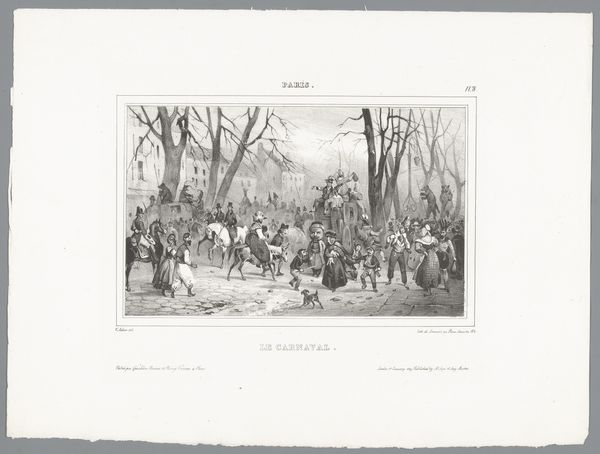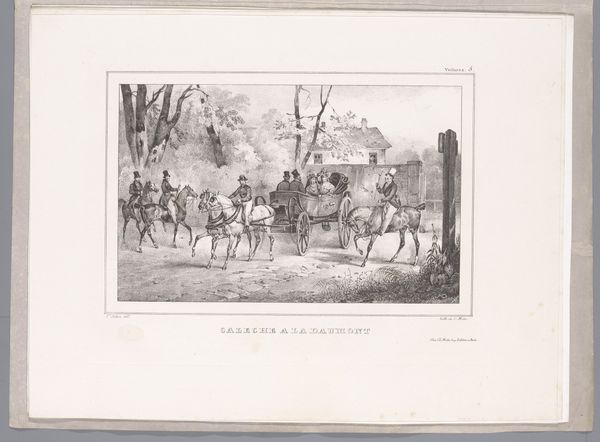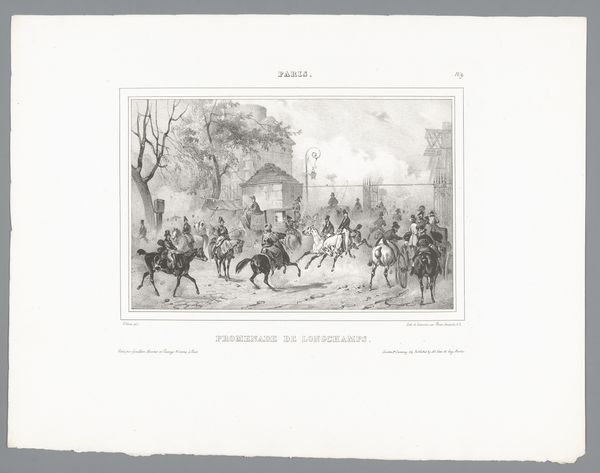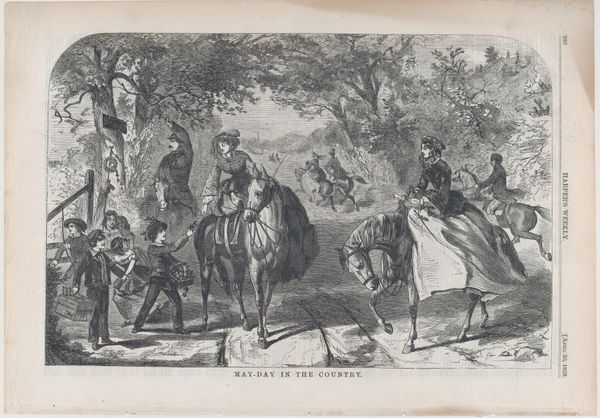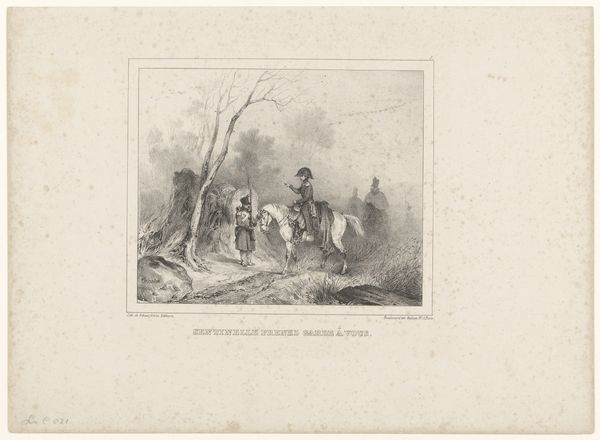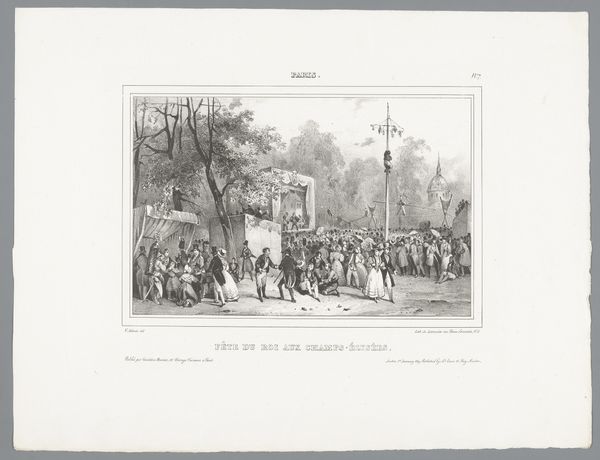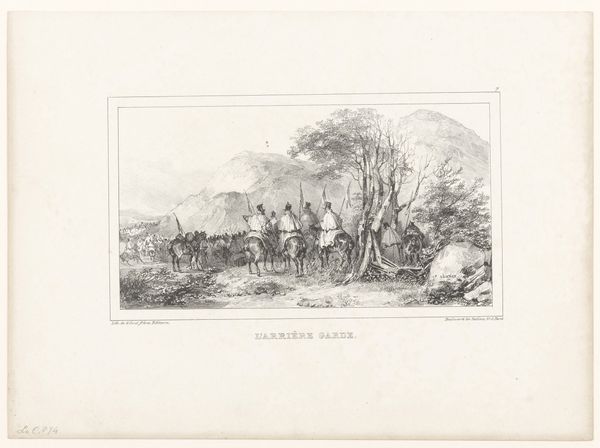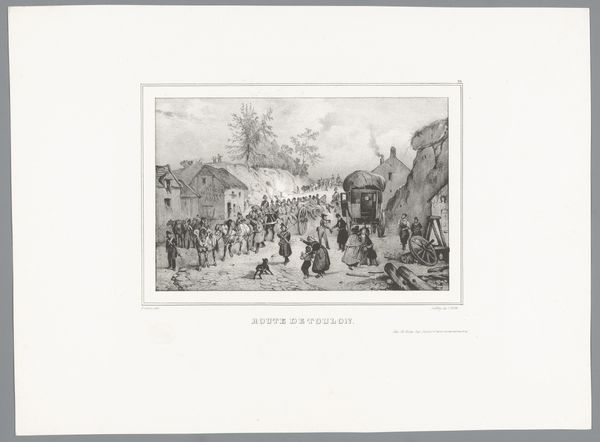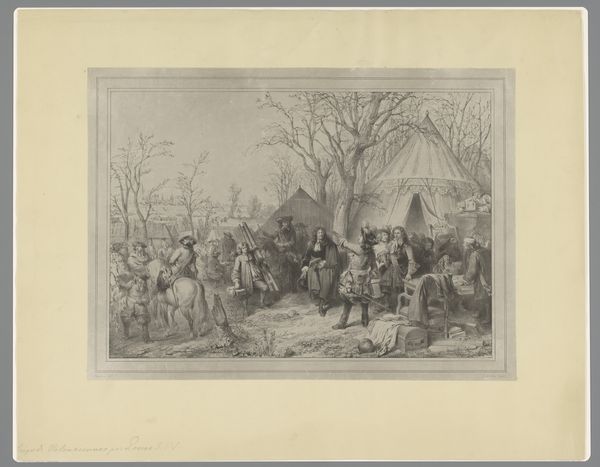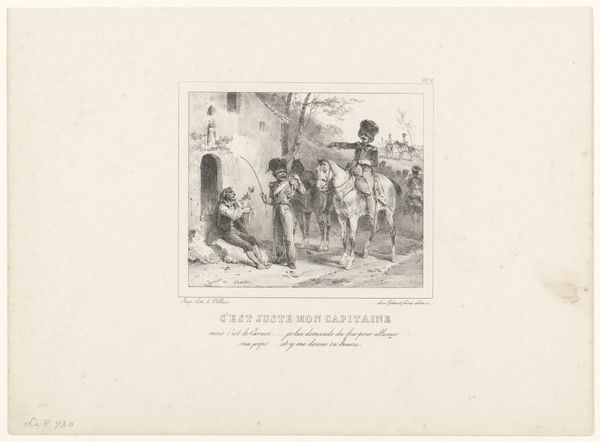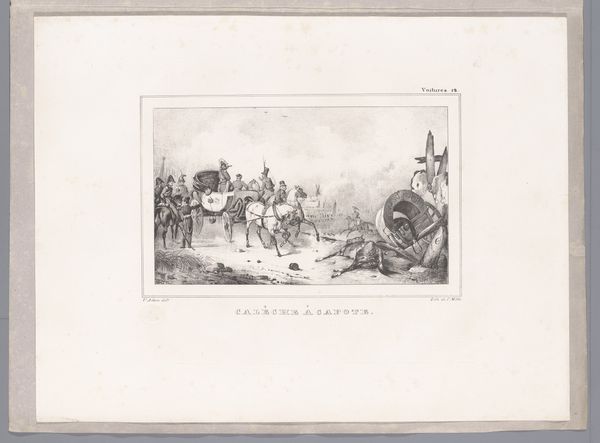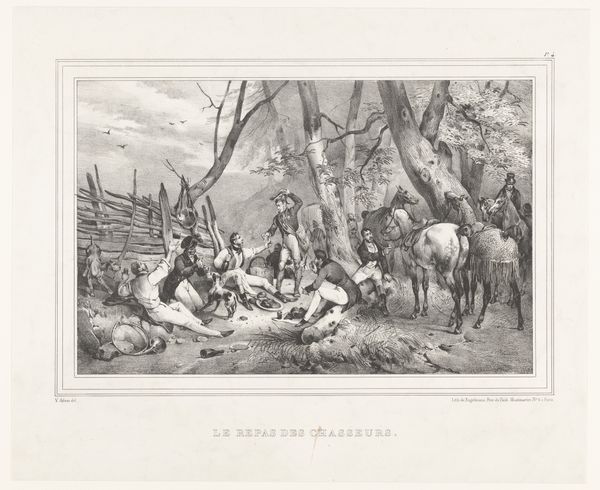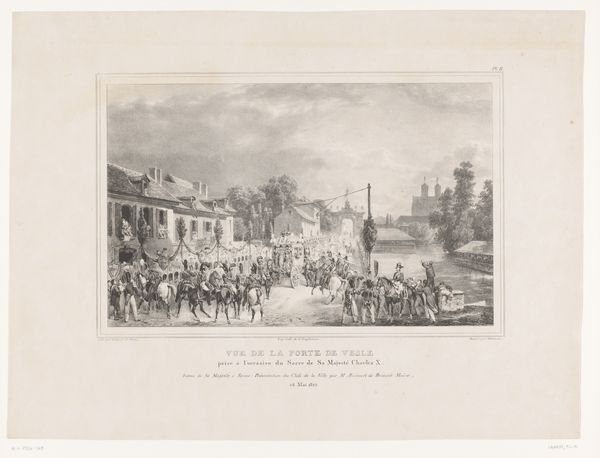
print, engraving
# print
#
landscape
#
romanticism
#
genre-painting
#
engraving
Dimensions: height 260 mm, width 345 mm
Copyright: Rijks Museum: Open Domain
Curator: This is Victor Adam's "Hofkoets voor de jacht," or "Hunting court carriage", dating back to 1828. The Rijksmuseum is fortunate to have this print in its collection. It's an engraving. Editor: My initial impression? There is something incredibly civilized and slightly unsettling about hunting being so...composed. The crisp blacks and whites give it a certain formality. Curator: Exactly. Adam captured a very specific moment in time when landscape, genre painting, and romanticism all converged, using printmaking! Can you imagine the skill and labour involved in executing those details in engraving? Editor: I can. It makes me wonder about the social function of these images, mass-produced, accessible only to an elite class. How did this depiction of leisure reinforce hierarchies, and ideas of human's right over animals and landscapes? Curator: Absolutely. It reminds us to look deeper. There's a narrative, but also a deliberate construction. Adam makes us feel present at a specific historical event, blurring the lines between spectator and participant. And I think the animals themselves, in this rendering, speak volumes about the values and perspectives that are dominant in the period. What kind of lives did engravers themselves have, creating these prints? Were they hunting for leisure themselves, I wonder? Editor: A Romantic ideal maybe. But it seems too studied somehow, missing that raw emotionality often associated with Romanticism. And how this artwork itself enters into a cycle of consumption—prints, reproductions, fueling a whole aesthetic ideology. I wonder about all of the toxic processes that go into making print media like this... Curator: That's a compelling way to see it. It opens up a fascinating line of inquiry. Looking beyond the beauty, towards the cost, material and cultural, the art asks of us. This changes, perhaps deepens, how the artist makes us feel about it, no? Editor: It's important not to detach process and material from the end image we see. This is, after all, ink on paper, not just a 'scene.' Recognizing that grounds our appreciation in tangible realities, doesn't it?
Comments
No comments
Be the first to comment and join the conversation on the ultimate creative platform.
